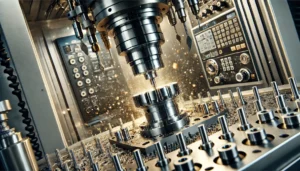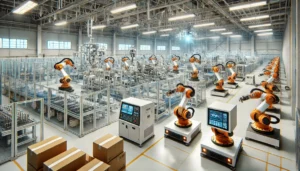The impact the environment has – be it on policies or the growth strategy of organizations around the world – has led to rapid adoption of green power tools over the past few years. Such industry-wide adoption underlines the fairly growing commitment towards sustainability while ensuring effective business operations.
Technological Advancements
Cordless power tools have greatly improved over the last few decades due to the advancements made in battery technologies, especially in lithium ion batteries. It is no more the case that gas-powered tools easily outpower their battery counterparts. In fact, modern battery powered devices not only compete, but tend to dominate the market. Innovations such as advanced battery management systems ensure optimal power output and prevent issues like overheating or overloading, thereby increasing tool efficiency and lifespan. These developments make battery powered tools more appealing and reliable to professionals working across various fields.
Environmental Considerations
Despite reducing reliance on fossil fuels, gas powered equipment is still heavily utilized across sectors. This contributes heavily to noise and air pollution, and emits greenhouse gasses into the atmosphere. On the other hand, tools powered by batteries have zero emissions while being operated. The comparatively quieter efficiency also works towards reducing the overall carbon footprint. As industries become more socially aware, there is a shift towards using equipment that is less harmful to the environment. Corporates and businesses now aim to adopt sustainable practices in line with corporate social responsibility policies, while being more cognizant of consumer expectations.
Regulatory Changes
As it stands, government compliance tends to favor the use of eco-friendly equipment. There are some jurisdictions that have already placed bans on the use of gas powered tools. Furthermore, in urban areas where noise ordinances are enforced, the use of battery powered tools is more suitable. With the development of regulations, industries are being forced to switch over to battery powered tools in order to avoid the legal repercussions that come with breaking a compliance law.
Economic Benefits
The use of battery-powered tools, though previously thought to be a big financial investment, is beginning to shift the narrative towards lower overall cost. These tools are less complicated and therefore require less maintenance, for example the need to constantly fuel the tool is eliminated. Furthermore, the need for repair is greatly reduced as lack of engine wear means less damage to the tool. Improved technology means batteries have longer lives and will become less expensive with the passage of time. This means in the long run, switching to eco-friendly tools means businesses save money.
Industry Adoption
Many industries have begun the process of switching over to eco-friendly power tools:
- Construction and Landscaping: The use of gas-powered equipment was the norm in this industry until now. There is now a greater acceptance of battery-powered tools such as chainsaws, lawn mowers, and compressors. The modern battery operated chainsaw is a prime example where power comparable to gas powered models is being delivered, which challenges previous assumptions regarding the capabilities of electric tools.
- Facility Maintenance and Warehousing: The popularity of battery-operated equipment in these industries is growing, and accessories like cordless impact wrenches, drills, and grinders have become a central piece of equipment. Their indoor usage is not restricted due to the minimal noise pollution and lack of emissions produced while operating these tools, thus helping to improve the working environment.
- Manufacturing: To address the requirement for sustainability, manufacturers are expanding their focus to include the creation of tools from recycled or bio-friendly materials. Increasingly, hand tool manufacturers are adopting practices that eliminate excess materials and provide minimal, recyclable containers.
Challenges and Considerations
Despite the benefits, there are still some hurdles in the implementation of environmentally friendly powered tools. During extreme sub-zero conditions, the runtime of the battery may decrease, which can prove detrimental in certain regions. However, these concerns are being catered for by thorough battery technologies in the new market.
Conclusion
The increase in the popularity of green power tools is both global and local in scope due to changing technology, the climate, policies, and business realities. As more construction investment projects are started, the usage of battery-operated tools is bound to increase which is good for business as well as good for the environment. Eco-friendly power tools are modifying industries and establishing new benchmarks for productivity and environmental stewardship because of new technologies and increasing dedication to sustainable development.










